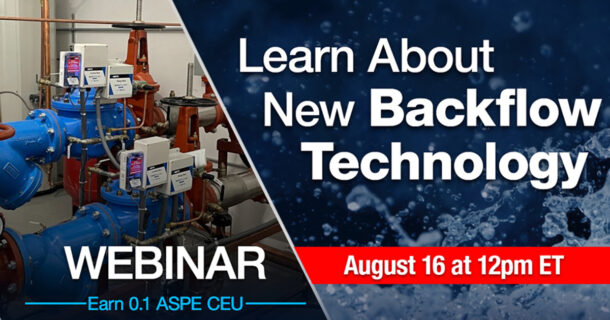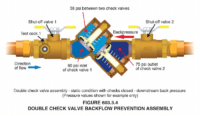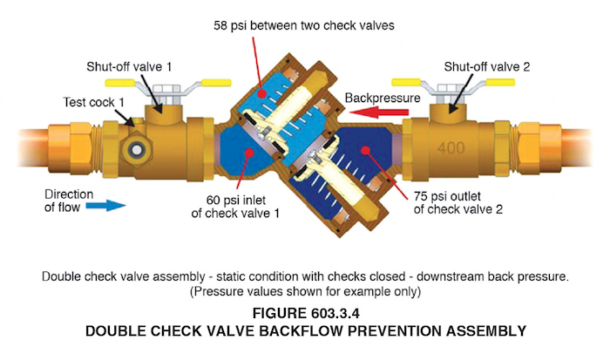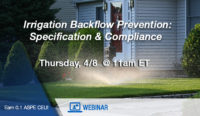Watts has announced a new webinar: New Tech in Backflow Prevention: The Future is Now. It’s ASPE-accredited and worth 0.1 CEUs. On Wednesday, August 16, 2023, 12:00 p.m. ET., participants will learn about: What backflow is and why it is required The principals of continuous monitoring Understanding connectivity considerations and options The nuances of indoor Read more
Backflow prevention

Watts has announced a new webinar: New Tech in Backflow Prevention: The Future is Now. It’s ASPE-accredited and worth 0.1 CEUs.

On Wednesday, August 16, 2023, 12:00 p.m. ET., participants will learn about:
- What backflow is and why it is required
- The principals of continuous monitoring
- Understanding connectivity considerations and options
- The nuances of indoor vs. outdoor installs
- Sustainability in backflow prevention
Visit watts.com/BackflowDayCEU to register.

From the 2021 UPC Illustrated Training Manual, Chapter 6, WATER SUPPLY AND DISTRIBUTION 603.3.4 Double Check Valve Backflow Prevention Assembly (DC). A double check valve backflow prevention assembly consists of two independently acting internally loaded check valves, four properly located test cocks, and two isolation valves. The double check valve backflow prevention assembly (DC) is Read more
From the 2021 UPC Illustrated Training Manual, Chapter 6, WATER SUPPLY AND DISTRIBUTION
603.3.4 Double Check Valve Backflow Prevention Assembly (DC). A double check valve backflow prevention assembly consists of two independently acting internally loaded check valves, four properly located test cocks, and two isolation valves.

The double check valve backflow prevention assembly (DC) is just what it says – two check valves in series to prevent backflow (see Figure 603.3.4). The first check will close in a backflow condition. Usually one psi of backflow pressure will close the check. The second check is incorporated as a backup if the first check fails; however, there is no way to know if the second check has failed until it is tested. If the device fails, there is no means for removal of the polluted or contaminated water, which may then travel into the potable line. Therefore, the DC may only be used on low-hazard applications. Any liquid connected to the piping downstream of a DC should be a pollutant and not a contaminant.
The DC provides backpressure and backsiphonage protection. A DC may be used as meter-service protection as a containment, or on individual fixtures and appliances as isolation protection. A field test is required on installation, at least annually thereafter, after any repair and when relocated. The device must be installed a minimum of 12 inches above the surrounding ground or floor.

Watts will host a customer webinar, Irrigation Backflow Prevention: Specification & Compliance, on Thursday, April 8, at 11:00 am ET. Design is the foundation of a successful irrigation system. During this webinar, our industry subject matter expert will discuss: How to help maintain compliance and make service easier for irrigation flow control solutions The basics Read more
Watts will host a customer webinar, Irrigation Backflow Prevention: Specification & Compliance, on Thursday, April 8, at 11:00 am ET.

Design is the foundation of a successful irrigation system. During this webinar, our industry subject matter expert will discuss:
- How to help maintain compliance and make service easier for irrigation flow control solutions
- The basics of navigating compliance, specification, and design for irrigation backflow prevention
By attending the entire webinar, attendees can receive 0.1 Continuing Education Unit (CEU) through the American Society of Plumbing Engineers (ASPE). To register for this webinar, visit: https://bit.ly/3fk1q71.
